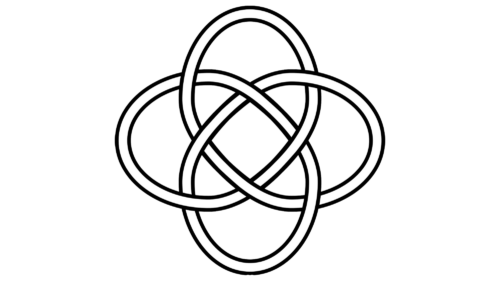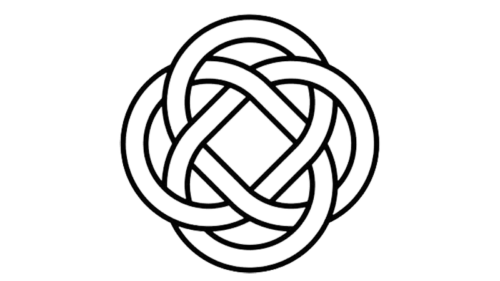Celtic symbols, a mesmerizing collection of motifs from the ancient Celts, have piqued global curiosity for their elaborate designs and profound meanings. These emblematic icons, originating from the Celtic tribes that once thrived across modern-day Ireland, Scotland, Wales, and parts of France and England, embody a vast array of concepts from valor to wisdom, and the perpetual nature of the soul. Among the plethora of symbols, the Claddagh ring and the Dara Knot stand prominent for their symbolic depth; the former represents the virtues of love, loyalty, and friendship, while the latter is a testament to inner strength, wisdom, and leadership. These symbols, while notable, represent merely a fraction of the Celtic symbolic lexicon, which is rich with deep-seated cultural and spiritual significance.
Delving deeper into this rich tapestry, the Eternity Knot, or the Endless Knot, emerges as a particularly fascinating symbol. Characterized by its intricate, looping design without a start or finish, the Eternity Knot exemplifies the Celtic belief in the cyclical nature of life and the interconnectedness of all things. This symbol eloquently conveys the notion of perpetual life, underscoring the eternal journey of the soul through life, death, and rebirth, without beginning or end, in a seamless continuum.
Celtic symbols transcend mere decoration, embodying a culture’s wisdom and its relationship with the universe. Positioned at the heart of this symbolism, the Celtic symbols meaning articulates a deep connection between the spiritual and the physical realms, reflecting the ancient Celts’ belief in the cyclical nature of life and the interconnectedness of all existence. This intrinsic meaning offers insight into a civilization that viewed the cosmos as a complex, intertwined tapestry, highlighting their profound understanding of life’s eternal cycles and mysteries.
The Eternity Knot was also revered as a guardian symbol, believed to entrap evil spirits within its endless loops, safeguarding the wearer against harm. This protective aspect highlights the knot’s role not just as a symbol of eternal life but also as an ancient Celtic amulet.
The symbolism of the Eternity Knot extends to various dimensions, from spiritual to protective. Historically, it adorned Christian monuments and illuminated manuscripts, merging pagan Celtic and Christian traditions in a visual narrative that celebrated the endlessness of divine love and the immutable bond between the material and the spiritual realms.
The relevance of Celtic symbols, especially the Eternity Knot, in today’s cultural landscape is profound. These ancient motifs act as conduits to our ancestors, offering insights into a world where nature, the divine, and human experience were deeply entwined. They continue to resonate, finding expression in modern jewelry, art, and personal emblems, cherished for their historical depth as well as their enduring appeal in representing universal themes of life, continuity, and protection. To appreciate the multifaceted nature of the Eternity Knot, consider the following aspects that highlight its significance:
- Symbolic Representation: It embodies the infinite cycle of life, death, and rebirth, reflecting the Celts’ belief in the eternal nature of the soul.
- Cultural Integration: Its presence in Christian contexts illustrates the fusion of Celtic and Christian traditions, symbolizing unity and the eternal nature of faith.
- Artistic and Decorative Use: The knot’s aesthetic has been a source of inspiration for centuries, featured in art, architecture, and manuscripts, showcasing the intricate beauty of Celtic design.
- Protective Talisman: Believed to offer protection from evil, the Eternity Knot served as a spiritual shield, a testament to the Celts’ reverence for symbols as guardians.
- Contemporary Relevance: Today, it is celebrated in various forms, from tattoos to jewelry, reflecting a longing for connection with ancient wisdom and the natural world.
In weaving the rich tapestry of Celtic symbolism into the fabric of modern consciousness, symbols like the Eternity Knot serve as reminders of our shared heritage. They encapsulate timeless wisdom, echoing the Celts’ profound understanding of life’s mysteries and the interconnectedness of all existence. Through these enduring symbols, the spirit of the ancient Celts continues to inspire and enlighten, bridging the gap between past and present with enduring threads of cultural and spiritual significance.
Eternity Knot Tattoo
The Eternity Knot tattoo embodies more than just an aesthetic choice; it serves as a profound personal statement, intertwining the wearer’s soul with the ancient wisdom and spiritual beliefs of the Celts. This symbol, with its endless paths and intricate loops, is a powerful emblem of life’s interconnectedness and the eternal flow of the universe. People drawn to this symbol often seek to express their belief in continuity, balance, and the cyclical nature of existence. By inscribing the Eternity Knot on their skin, individuals make a lifelong commitment to the ideals of endless growth, eternal love, and the interconnectedness of all living things.
Choosing an Eternity Knot tattoo is not merely about selecting a design; it’s about embracing a piece of ancient heritage and making it a part of one’s personal narrative. This tattoo becomes a talisman, a source of strength, and a constant reminder of the wearer’s connection to the ancient Celtic culture and its timeless values. The Eternity Knot, with its absence of a beginning or an end, symbolizes the notion that life and spirit are perpetual, transcending the physical plane and connecting the wearer to the universal cycles of life and nature.
Furthermore, the Eternity Knot tattoo often serves as a conversation starter, inviting questions and discussions about its meaning and the rich cultural history it represents. It’s a testament to the wearer’s respect for ancient wisdom and their desire to carry forward the enduring legacy of the Celts. As tattoos continue to be a popular form of self-expression, the Eternity Knot stands out for its deep symbolic significance, beauty, and the profound connection it offers to the mysteries of the past and the eternal truths of the universe.









